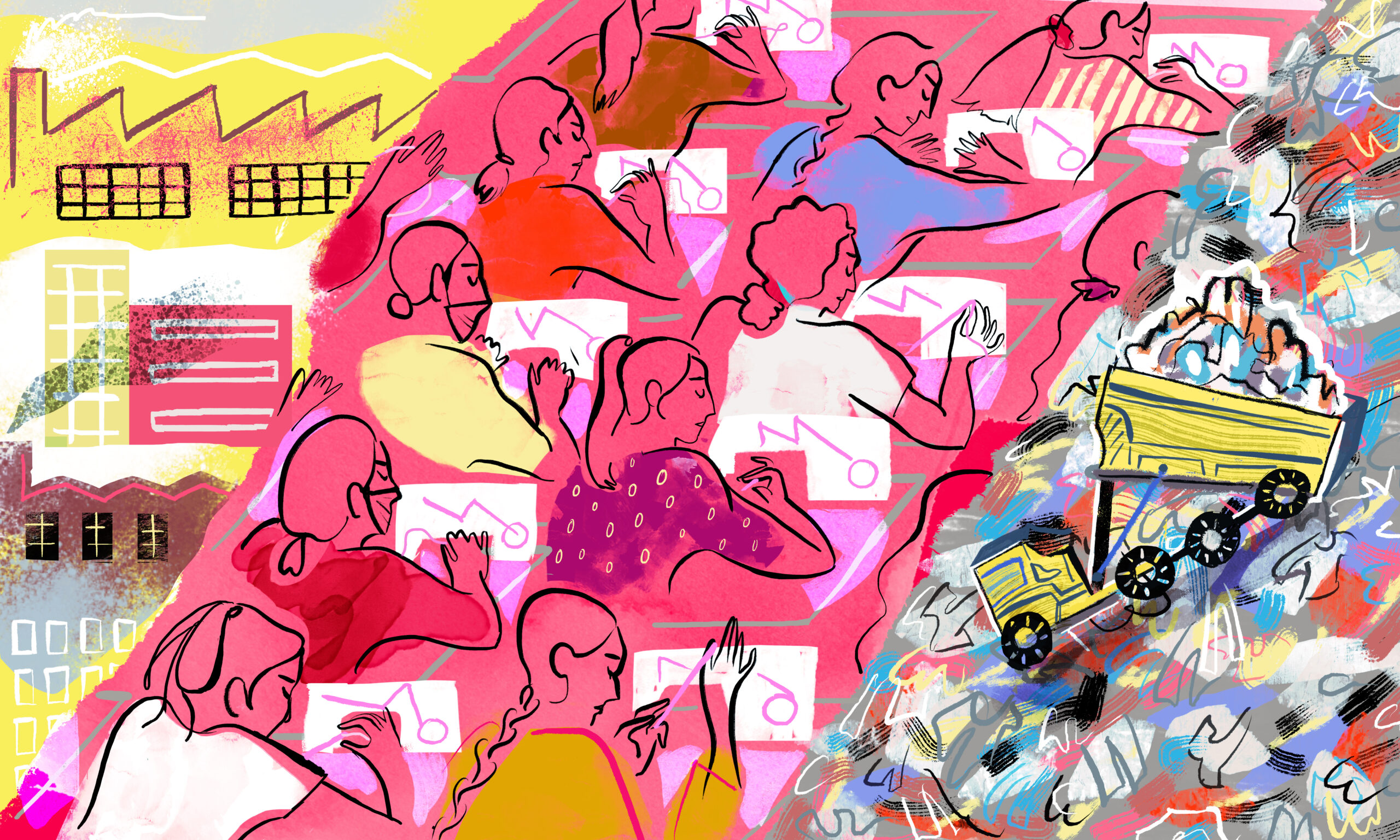
Fashion wastelands in Africa and the Atacama Desert
A project called Dead White Man’s Clothes, after the name given to clothing exports from the West to Ghana, shows grimly the problem of fashion waste exports.
The UK is the biggest exporter to Ghana. In fact, the UK produces the most clothing waste in Europe. And we’re the second largest used clothing exporter in the world, after the US.
Traders and tailors in Accra’s Kantamanto market work hard to repurpose and sell the clothing that arrives on their shores.
The upcycling and reuse culture in Accra is a great example of what a more sustainable and circular fashion industry could look like.
But the sheer volume – and poorly constructed fast fashion items that aren’t made to last – means a lot of it is impossible to use and upcycle.
So it ends up in landfills, wrapped around the ropes of fishing boats near Accra, and strewn across beaches.
Solomon Noi, the city’s head of waste management, reckons that 40% of the used clothing coming through Accra’s port ends up as garbage. A landfill that was supposed to have a lifespan of 25 years filled up in three.https://t.co/TenL37Mkjm via @BW
— Valérie Boiten (@Valerie_Boiten) November 9, 2022
And Ghana isn’t the only country facing these massive problems. A recent investigation revealed that Europe is dumping 37 million pieces of plastic clothing on Kenya, too.
A 2022 Greenpeace report found massive fashion waste exports pouring into Kenya and Tanzania. In 2019 alone, 185,000 tonnes of second-hand clothes were imported into Kenya. In East Africa this second hand fashion is called “Mitumba”, a Kiswahili word meaning bale or bundle, because it is typically sold to retailers in bales.
30–40% of Mitumba imported to Kenya is of such bad quality that it cannot be sold anymore, meaning in 2019, Kenya had to deal with 150–200 tonnes of fashion and textile waste per day.
And there’s also the Atacama Desert, where piles of clothing waste were documented in 2021:
This is all very embarrassing for the fashion industry. They make too much – and they know it.
But what happens when clothing doesn’t even make it into the hands of buyers? Some of this brand-new, unworn clothing also ends up in places like Ghana.
A lot of it is sent to be burned.
The industry literally burns its own clothes
A lot of unsold stock from companies – knowingly producing far too much to drive prices down – is probably incinerated. But it’s an industry secret how much brand new fashion gets burned.
Burberry shocked the world by accidentally leaking details of its £26-million bonfire of luxury goods in 2018. So it’s no wonder the whole industry has doubled down on hiding their practices.
Why don’t these companies recycle these surplus clothes?
Recycling textiles can be difficult and expensive. Take a look at any clothing label – fibres are often so mixed up, they’ll never be separated and reused in any useful way. And again, with such large volumes, made with massive amounts of cheap materials, wastage in factories is also high.
Greenpeace’s investigative journalists from Unearthed found that garment waste from Nike, Ralph Lauren, Next, and other leading brands were burned to fuel brick kilns in Cambodia.
Because so much fashion is made from essentially plastic, burning it can be extremely toxic to health. The investigation found that black, choking smoke and noxious fumes exposed bonded workers to toxic chemicals – leading to coughs, colds, flus, nose bleeds and lung inflammation.
Usually such kilns would be fuelled by wood. But fashion waste is so plentiful (thanks to supplies being cheaper in larger quantites) that several hundred tons are being burned in Cambodia every day.

